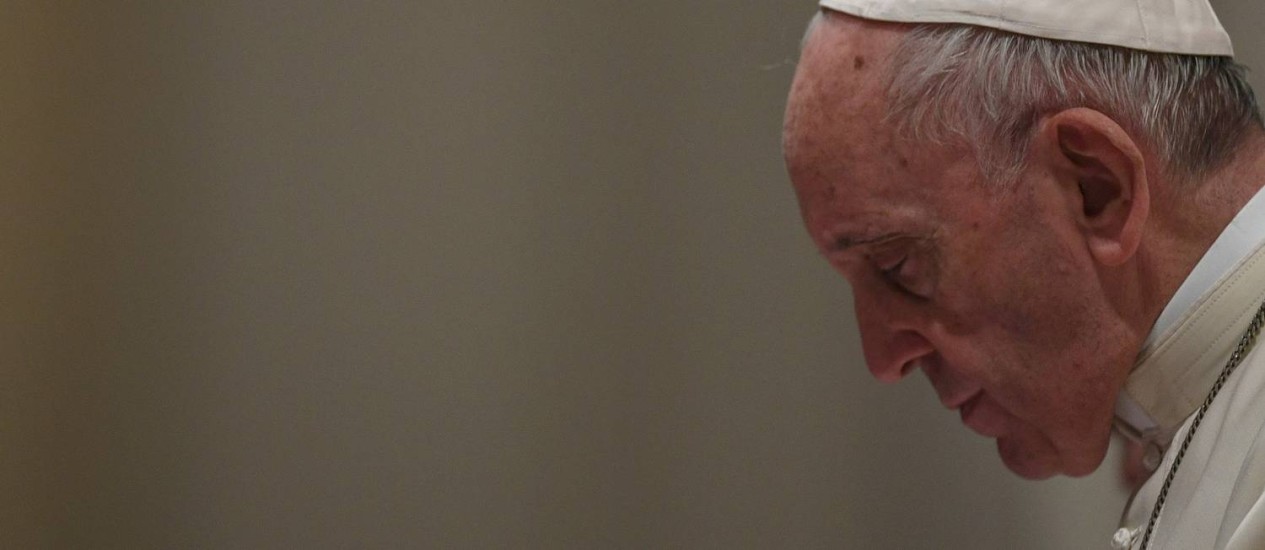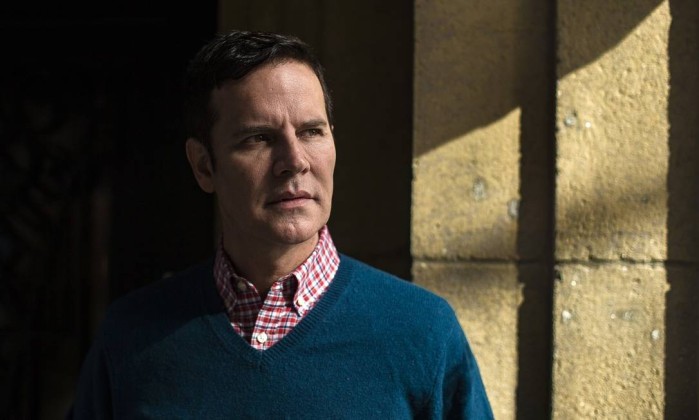Cacá Diegues
É preciso que se entenda de uma vez que o cinema brasileiro não vive de dinheiro público como, com toda a justiça, as outras artes em geral
Quando fiz
meu primeiro longa-metragem, o Brasil produzia seis ou sete filmes por
ano. Hoje, são 160 títulos, com alguns sucessos comerciais de respeito e
outros repercutindo nos festivais internacionais por sua qualidade.
Tenho autoridade para dizer que o Brasil vive o melhor momento da
história de seu cinema, com a diversidade que um país do nosso tamanho
merece e precisa ter. Mas há sempre os que não querem que ele exista.
Será que agora a bomba vem do Tribunal de Contas da União? O TCU quer interromper a produção de cinema no Brasil por, no mínimo, dois anos, a fim de passar a limpo as contas de uma agência pública, a Ancine, que nós nunca administramos, que nunca foi responsabilidade nossa.
É preciso que se entenda de uma vez que o cinema brasileiro não vive de dinheiro público como, com toda a justiça, as outras artes em geral. O mecanismo que beneficia nossa economia cinematográfica é uma contribuição devida pelas atividades audiovisuais no país, a Condecine. Não só o cinema não está no orçamento do Estado, como também os recursos de que dispomos vêm de nossa própria atividade. E, para cada real que uma produção usa da Condecine, de 3 a 4 reais vão para o Estado, na forma de impostos e outros compromissos cidadãos. Sem contar o grande número de empregos que cada produção cria, do operário que carrega a grua e prepara o travelling aos profissionais especializados em administração, finanças e tecnologias variadas.
O relator do caso no TCU afirma que é um absurdo o cinema ter tanto dinheiro à sua disposição, diante da crise fiscal do país, da falta de recursos para educação, saúde e segurança pública, sobretudo num ano eleitoral. Segundo ele, dá até para desconfiar. Desculpe, doutor, com todo o respeito por seus títulos, se o cinema acabar, acaba também a Condecine e seus recursos desaparecem, não vão legalmente para lugar nenhum, nem mesmo para as atividades citadas que realmente precisam de socorro. Por falar em ano eleitoral, que tal procurar no bolso de certos políticos o dinheiro que falta para os serviços do Estado?
O que complica a nossa vida é que cabe a uma agência pública, a Ancine, a regulação e fiscalização dessa atividade privada.
Toda produção de cinema presta contas à Ancine. Conforme o filme vai sendo feito, os recursos usados vão sendo contabilizados, e suas contas são entregues à Ancine. Quando o filme está pronto, sua prestação de contas já estará encerrada. Mas, como são mais de cem produções anuais, a Ancine não tem gente, nem meios para conferir essas contas em tempo hábil e legal. Com a ajuda da AGU, inventaram então um sistema de algoritmos que, através de sorteio, indica as produções que serão examinadas. Até agora, tiveram poucos problemas no assunto.
Um desses “problemas” é o caso de “O som ao redor”, filme de Kleber Mendonça, o cineasta de “Aquarius”, hoje consagrado em todo o mundo. “O som ao redor” era para ser um filme de baixo orçamento, que não custaria mais que 1,7 milhão de reais. Mas, por contingências naturais do cinema, acabou custando cerca de 300 mil reais a mais. Pois essa diferença está gerando uma multa absurda, mesmo que o cineasta já tenha prestado contas de onde seu filme gastou esse suplemento orçamentário. Os carrascos do cinema se divertem com a multa gigantesca que inclui uma máxima correção monetária e as outras maldades financeiras criadas para acabar com a pessoa.
O Estado nos cobra o que supõe estarmos devendo; mas não se manifesta, muito menos comemora as glórias que um cineasta como Kleber Mendonça traz para o país. Num momento de crise como a que vivemos, em vez de coagir nossos artistas, o Estado devia valorizá-los, numa tentativa de mostrar ao mundo, nesse momento rindo de nós, que também temos do que nos orgulharmos.
Agora mesmo, no Festival de Cannes, o Brasil esteve representado na Quinzena dos Realizadores pelo sucesso do filme “Los silencios”, de Beatriz Seigner; enquanto “Diamantino”, filme de estreia de Daniel Schmidt e Gabriel Abrantes, ganhava o prêmio de melhor filme na Semana da Crítica. Na seleção oficial, “O grande circo místico”, além da repercussão de público e crítica, ainda ganhou uma elogiosa menção do ministro da Cultura de Portugal, o professor Luís Castro Mendes, em nota oficial de seu ministério sobre o festival.
No Brasil, quando as coisas vão mal, o cinema é sempre o primeiro suspeito. O mordomo está sempre com a câmera na mão. O país gasta fortunas com incentivos fiscais para indústrias poluentes, destruidoras da economia e do ar do país, e nunca vi um anúncio em painel de automóvel agradecendo qualquer ministério pela colaboração. Já em nossos filmes, temos a obrigação de citar, mais de uma vez, todos os instrumentos do Estado, como se aquilo tudo fosse dinheiro e serviço dele. Um favor do Estado.
Essa onda contra o cinema brasileiro surge exatamente no momento em que a Ancine e o MinC anunciam novos recursos para o programa Audiovisual Gera Futuro. A ação pode não ter sido hábil, mas isso não tem nada a ver com os filmes que fazemos e ainda queremos fazer. Se o cinema brasileiro for vítima do desatino em curso, nossos projetos serão interrompidos, ninguém sabe por quanto tempo. E o Brasil arrastará por aí a sua miséria, sem uma voz e uma alma que o representem. A escuridão será definitiva.
ilustração ANDRÉ MELLO
Será que agora a bomba vem do Tribunal de Contas da União? O TCU quer interromper a produção de cinema no Brasil por, no mínimo, dois anos, a fim de passar a limpo as contas de uma agência pública, a Ancine, que nós nunca administramos, que nunca foi responsabilidade nossa.
É preciso que se entenda de uma vez que o cinema brasileiro não vive de dinheiro público como, com toda a justiça, as outras artes em geral. O mecanismo que beneficia nossa economia cinematográfica é uma contribuição devida pelas atividades audiovisuais no país, a Condecine. Não só o cinema não está no orçamento do Estado, como também os recursos de que dispomos vêm de nossa própria atividade. E, para cada real que uma produção usa da Condecine, de 3 a 4 reais vão para o Estado, na forma de impostos e outros compromissos cidadãos. Sem contar o grande número de empregos que cada produção cria, do operário que carrega a grua e prepara o travelling aos profissionais especializados em administração, finanças e tecnologias variadas.
O relator do caso no TCU afirma que é um absurdo o cinema ter tanto dinheiro à sua disposição, diante da crise fiscal do país, da falta de recursos para educação, saúde e segurança pública, sobretudo num ano eleitoral. Segundo ele, dá até para desconfiar. Desculpe, doutor, com todo o respeito por seus títulos, se o cinema acabar, acaba também a Condecine e seus recursos desaparecem, não vão legalmente para lugar nenhum, nem mesmo para as atividades citadas que realmente precisam de socorro. Por falar em ano eleitoral, que tal procurar no bolso de certos políticos o dinheiro que falta para os serviços do Estado?
O que complica a nossa vida é que cabe a uma agência pública, a Ancine, a regulação e fiscalização dessa atividade privada.
Toda produção de cinema presta contas à Ancine. Conforme o filme vai sendo feito, os recursos usados vão sendo contabilizados, e suas contas são entregues à Ancine. Quando o filme está pronto, sua prestação de contas já estará encerrada. Mas, como são mais de cem produções anuais, a Ancine não tem gente, nem meios para conferir essas contas em tempo hábil e legal. Com a ajuda da AGU, inventaram então um sistema de algoritmos que, através de sorteio, indica as produções que serão examinadas. Até agora, tiveram poucos problemas no assunto.
Um desses “problemas” é o caso de “O som ao redor”, filme de Kleber Mendonça, o cineasta de “Aquarius”, hoje consagrado em todo o mundo. “O som ao redor” era para ser um filme de baixo orçamento, que não custaria mais que 1,7 milhão de reais. Mas, por contingências naturais do cinema, acabou custando cerca de 300 mil reais a mais. Pois essa diferença está gerando uma multa absurda, mesmo que o cineasta já tenha prestado contas de onde seu filme gastou esse suplemento orçamentário. Os carrascos do cinema se divertem com a multa gigantesca que inclui uma máxima correção monetária e as outras maldades financeiras criadas para acabar com a pessoa.
O Estado nos cobra o que supõe estarmos devendo; mas não se manifesta, muito menos comemora as glórias que um cineasta como Kleber Mendonça traz para o país. Num momento de crise como a que vivemos, em vez de coagir nossos artistas, o Estado devia valorizá-los, numa tentativa de mostrar ao mundo, nesse momento rindo de nós, que também temos do que nos orgulharmos.
Agora mesmo, no Festival de Cannes, o Brasil esteve representado na Quinzena dos Realizadores pelo sucesso do filme “Los silencios”, de Beatriz Seigner; enquanto “Diamantino”, filme de estreia de Daniel Schmidt e Gabriel Abrantes, ganhava o prêmio de melhor filme na Semana da Crítica. Na seleção oficial, “O grande circo místico”, além da repercussão de público e crítica, ainda ganhou uma elogiosa menção do ministro da Cultura de Portugal, o professor Luís Castro Mendes, em nota oficial de seu ministério sobre o festival.
No Brasil, quando as coisas vão mal, o cinema é sempre o primeiro suspeito. O mordomo está sempre com a câmera na mão. O país gasta fortunas com incentivos fiscais para indústrias poluentes, destruidoras da economia e do ar do país, e nunca vi um anúncio em painel de automóvel agradecendo qualquer ministério pela colaboração. Já em nossos filmes, temos a obrigação de citar, mais de uma vez, todos os instrumentos do Estado, como se aquilo tudo fosse dinheiro e serviço dele. Um favor do Estado.
Essa onda contra o cinema brasileiro surge exatamente no momento em que a Ancine e o MinC anunciam novos recursos para o programa Audiovisual Gera Futuro. A ação pode não ter sido hábil, mas isso não tem nada a ver com os filmes que fazemos e ainda queremos fazer. Se o cinema brasileiro for vítima do desatino em curso, nossos projetos serão interrompidos, ninguém sabe por quanto tempo. E o Brasil arrastará por aí a sua miséria, sem uma voz e uma alma que o representem. A escuridão será definitiva.
ilustração ANDRÉ MELLO











